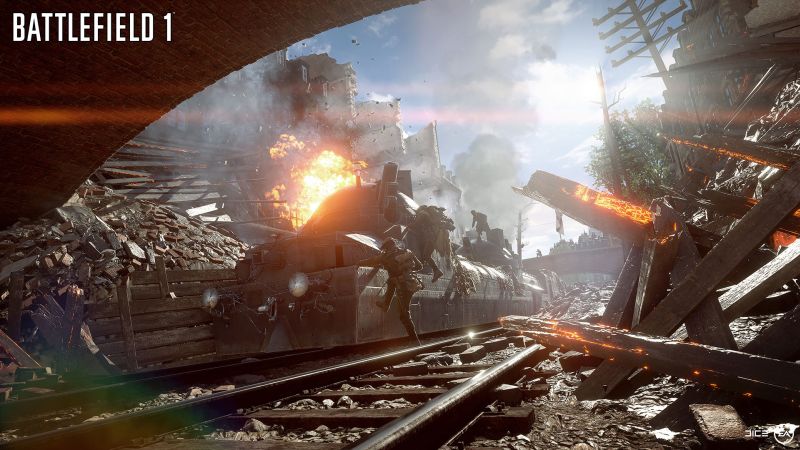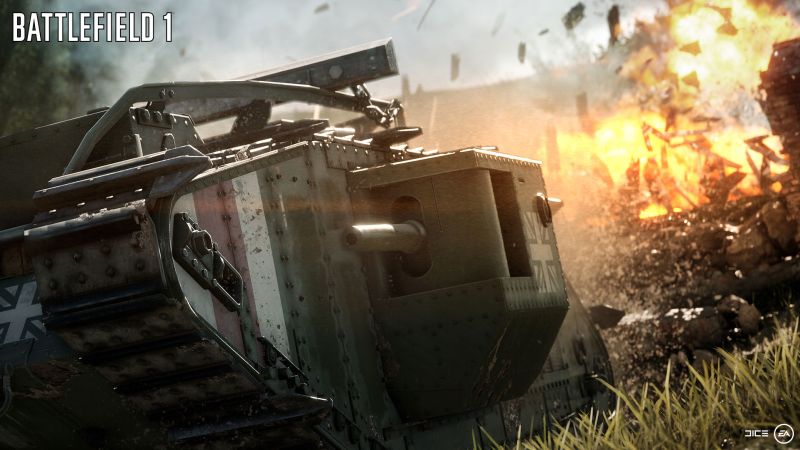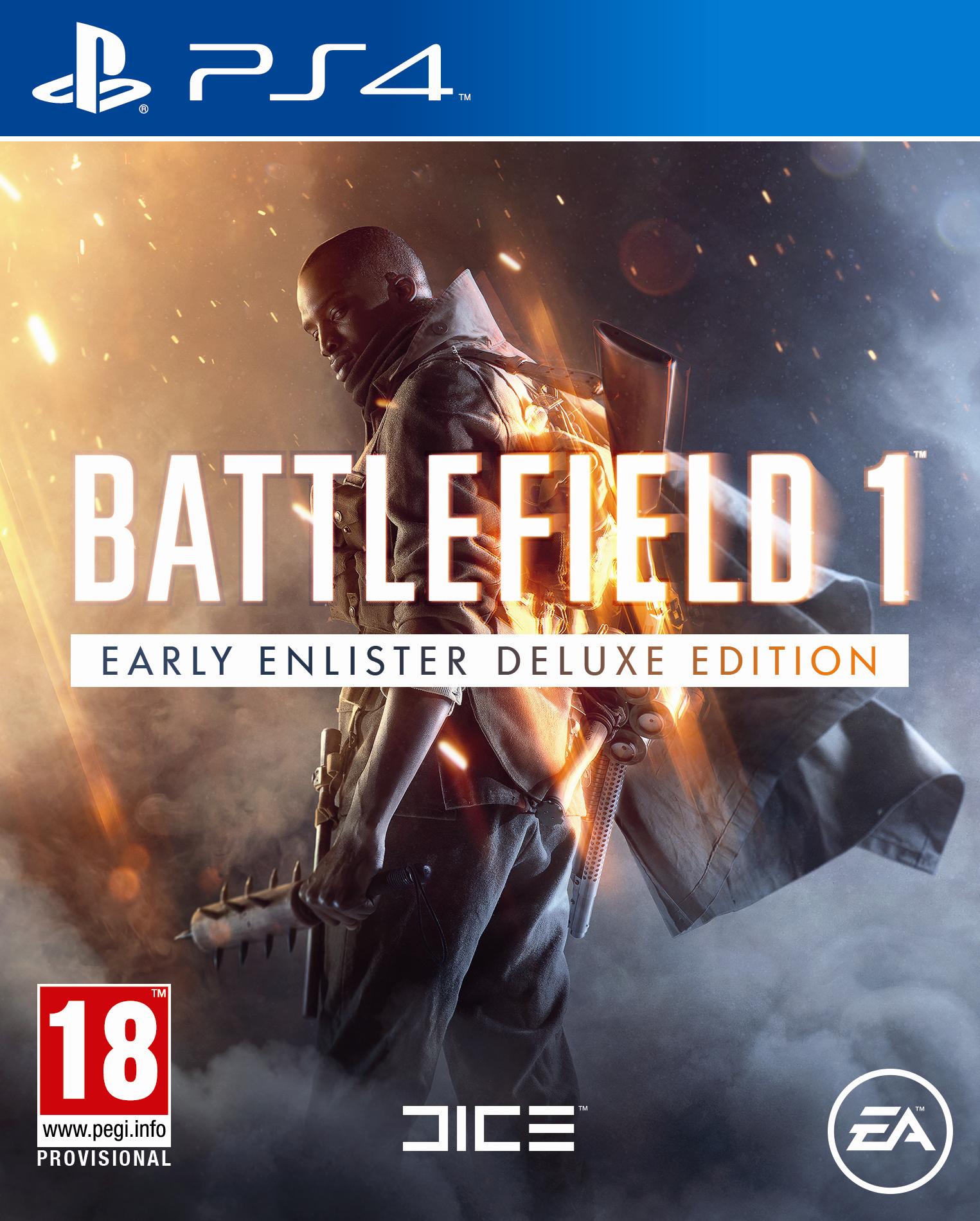
Let’s get this right out of the way. Battlefield 1 is one of the best looking games of 2016 and perhaps this generation. DICE have literally pushed any remaining power out of the PS4 and Xbox One along with heavy improvements in lighting; physical based rendering and global illumination technology. DICE have been consistently working to optimize the Frostbite engine, improving several technicalities along the way and the result is phenomenal regardless of whatever platform you happen to play Battlefield 1 on.
DICE seems to have upped the ante on consoles this time around. All Battlefield games along with Star Wars Battlefront have ran at 720p resolution on the Xbox One and 900p on the PlayStation 4. In many ways the sub-HD resolution was disappointing but the visual fidelity in return made things more or less bearable. However Battlefield 1 on consoles boasts increased resolution along with temporal anti-aliasing which helps in improving image quality compared to previous iterations.
"Battlefield 1 utilizes a dynamic resolution on both the PS4 and Xbox One. The former runs in a range of 1430 X 800 to 1800 X 1020 while the latter runs from 1330 X 750 to 1800 X 1020."
Battlefield 1 utilizes a dynamic resolution on both the PS4 and Xbox One. The former runs in a range of 1430 X 800 to 1800 X 1020 while the latter runs from 1330 X 750 to 1800 X 1020. This is a remarkable achievement for DICE, to render these kind of visuals on under powered hardware is nothing but astonishing. As far as performance goes, both versions target a frame rate cap of 60 and although they run at that standard for slower paced sections and even during some intense scenes, frame rate drops can be observed during sequences that have a ton of things going on. The Mark V tank missions where there are hundreds of different things going on at once is one such sequence where frame rate drops can be observed. Overall, we are pretty pleased with the game’s performance on consoles, it’s not a locked 60fps experience but for the visual fidelity on offer we will take the slight hit to performance.
Furthermore, the console versions also have a few visual parameters that can be adjusted. You can adjust the amount of motion blur and set the field of view according to your liking. It’s admittedly not much but it’s still better than nothing.
The console versions also seem like they are running at the high preset of the PC build. Talking about the PC version, the developers recommend an AMD FX 8350/ Intel Core i7 4790, 16GB of memory and an RX 480/GTX 1060. PC graphical settings include the option to toggle between DX11 and DX12, texture quality, texture filtering, ambient occlusion, effects quality, post processing quality and anti-aliasing up to TAA. There aren’t a ton of options but the beauty of the Frostbite’s engine is that it’s so well optimized that it does not require a ton of options to make the game scaleable.
We tested the game on five different GPUS, the GTX 970, R9 390, RX 480, GTX 1060 and GTX 1080. All our tests were carried out at Ultra settings and across the DX11 and DX12 versions, and Geforce 373.06 WHQL and Radeon Software 16.10.1 f drivers.
"Furthermore, the console versions also have a few visual parameters that can be adjusted. You can adjust the amount of motion blur and set the field of view according to your liking."
First we will tackle the DX11 version and begin with the standard 1080p resolution. Here are the average frame rate results:
- GTX 1080: 125fps minimum, 141fps average
- GTX 1060: 78fps minimum, 85fps average
- RX 480: 78fps minimum, 85 fps average
- GTX 970: 69fps minimum, 74 fps average
- R9 390: 71fps minimum, 78 fps average
Switching to 1440 i.e. 2k resolution, we observed the following results:
- GTX 1080: 91fps minimum, 100fps average
- GTX 1060: 53fps minimum, 58fps average
- RX 480: 55fps minimum, 61fps average
- GTX 970: 47fps minimum, 54fps average
- R9 390: 51fps minimum, 56 fps average
At 4K resolution, we observed the following results:
- GTX 1080: 51fps minimum, 56fps average
- GTX 1060: 31fps minimum, 34fps average
- RX 480: 31fps minimum, 34fps average
- GTX 970: 29fps minimum, 32fps average
- R9 390: 28fps minimum, 31fps average
Now let us shift our focus to DX12. Here are the results at 1080p:
- GTX 1080: 101fps minimum, 115fps average
- GTX 1060: 72fps minimum, 78fps average
- RX 480: 78fps minimum, 85 fps average
- GTX 970: 65fps minimum, 71fps average
- R9 390: 70fps minimum, 78fps average
At 1440p, we observed the following results:
- GTX 1080: 81fps minimum, 86fps average
- GTX 1060: 52fps minimum, 55fps average
- RX 480: 55fps minimum, 58fps average
- GTX 970: 39fps minimum, 44fps average
- R9 390: 52fps minimum, 56fps average
And finally we have 4K performance below:
- GTX 1080: 45fps minimum, 49fps average
- GTX 1060: 28fps minimum, 33fps average
- RX 480: 33fps minimum, 36fps average
- GTX 970: 23fps minimum, 25fps average
- R9 390: 28fps minimum, 31fps average
"Just like Star Wars Battlefront, Battlefield 1 will go down as one of the best look games of its year."
Overall, we are pretty pleased with how the game performs on the PC and to be honest we are not surprised given how well the Frostbite engine has always scaled on gaming PCs.
Just like Star Wars Battlefront, Battlefield 1 will go down as one of the best look games of its year. Battlefield 1 is a solid effort on the PC backed up by strong showings in the console department with improved image quality and better resolutions. It took DICE three years to bring this level of visual fidelity at an appreciable resolution on consoles and we can’t wait to see the kind of technical improvements they have in store for future Battlefield and Star Wars games, especially with the PS4 Pro set to launch soon and the Xbox One Scorpio up for release late next year.

















